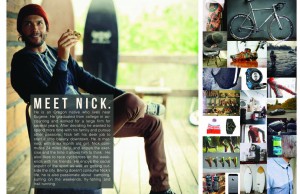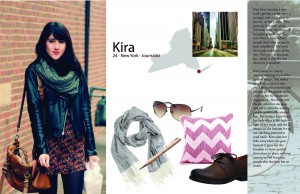
Meet Nick. He is from the area around Eugene, Ore. He graduated from college in accounting. After several years Nick left his desk job to start a bakery. Nick commutes by bike 24 miles daily and enjoys the exercise and the time it allows him to think.
BYU industrial design students have been making personality-specific helmets for bike accessory company Bontrager this semester, using virtual buyers like “Nick” to inform their designs.
Carrie Etherington, a junior in the program, said industrial design is more than just creating concepts for a product.
“We focus a lot on the human interaction aspect when working on an assignment or project,” Etherington said. “We ask ourselves how is someone going to use a product and how will they relate to it.”
Each student in the class chose from one of seven “personas”: Nick, Maverick, Kira, Carter, Sasha, Clark and a police officer. Before modeling, each student spent time with his or her persona to understand who they are, what they look like and what style of helmet they would wear.

Designing a helmet is no small task, said Jordan Hosler, a junior in the program; in industrial design they learn that process is key.
“In the industrial design program, there is a process that we learn to follow every time we have an assignment or a new project,” Hosler said. “In this particular case, since there are rules already in place for helmets, we mostly focused on the form and the aesthetic.”
Bryce Twede, also a junior, said industrial designers do not always design for themselves.
“We are not going to always own what we design,” Twede said. “At the very beginning of any project or exploration, we need to understand a little empathy for the user.”




